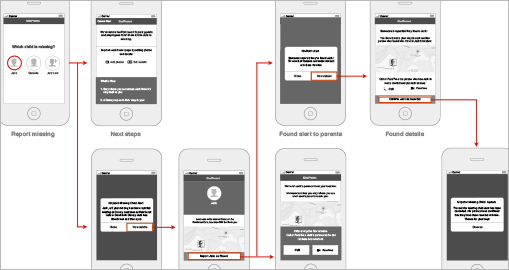The field of user experience is still fairly new and it’s exciting time be in the industry. But, with all the growing awareness and interest in the field, we need to do a better job at educating people on what user experience is.
Most people who aren’t in the industry would likely lean more towards defining user experience as how it looks and a few more knowledgeable people might also include function in their definition.
Why is this so important?
The truth is, a user experience designer can help set the course for a product, app, or service. But, there are many individual contributors who add and influence pieces of the user experience. There are copywriters, graphic designers, interface designers, front end developers, engineers, marketers, the list goes on.
My point is that given the volume of people involved in the creation of a digital product, there are a lot of places where things can get mis-interpreted and lost in translation.
Each of these contributors has a unique lens through which they will see a product. A technologist will likely see through a lens of functionality and effort required to achieve that functionality. A graphic designer will see through a very visual lens, where form trumps all.
For example, on a project I was working on I had spent a lot of hours designing a homepage for a brand that needed to reinforce to visitors that they were about commerce. A few days before launch, a few people on the client’s team got together and redesigned the homepage. It wasn’t awful. But, much of the focus on commerce that I had integrated into the design had been lost and replaced with giant graphics that pointed to content.
The designer who redid the homepage isn’t a bad designer, they just see the world through a graphic design / print design lens and were considering the screen in isolation instead of a part of a greater system.
This experience got me thinking that although I love what I do as a user experience designer, I also need to realize that won’t always own the final product. Of course, this is all dependent on the size of the team, the degree to which the team values user experience, and the presence of a chief product owner. In general though, the quality of our user experiences will depend on the degree to which everyone on the team has some understanding of what user experience is and how their pieces affect the user experience.
For people who call ourselves user experience designers, what does this mean?
For me, it means that even though I love to design I also need to realize that more than my designs, my clients need my education.
They need me to help them learn to think like a user experience designer.
They need me to act more like a coach, being at their side and helping them become a team that has a greater focus on and execution of their user experience.
They need me to help them think in systems and not just about individual screens. Consider systems before screens.
What does this look like?
I’m not sure yet. But as I figure that out, I’ll be doing more teaching and writing in 2014. And I hope to be more like a coach and bring more awareness and understanding of user experience to everyone who influences a product and user experience.

